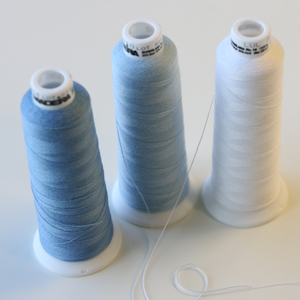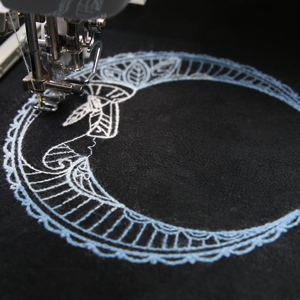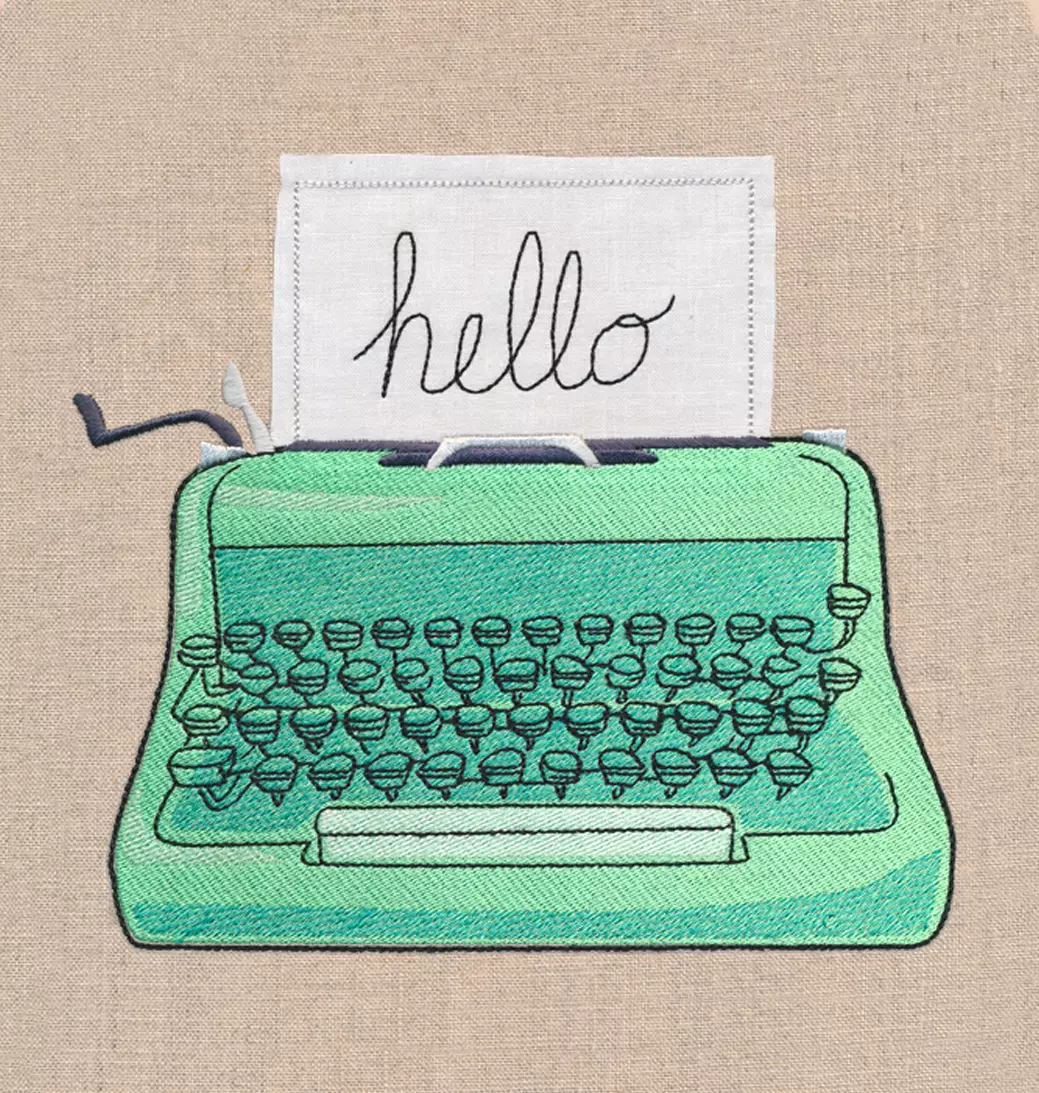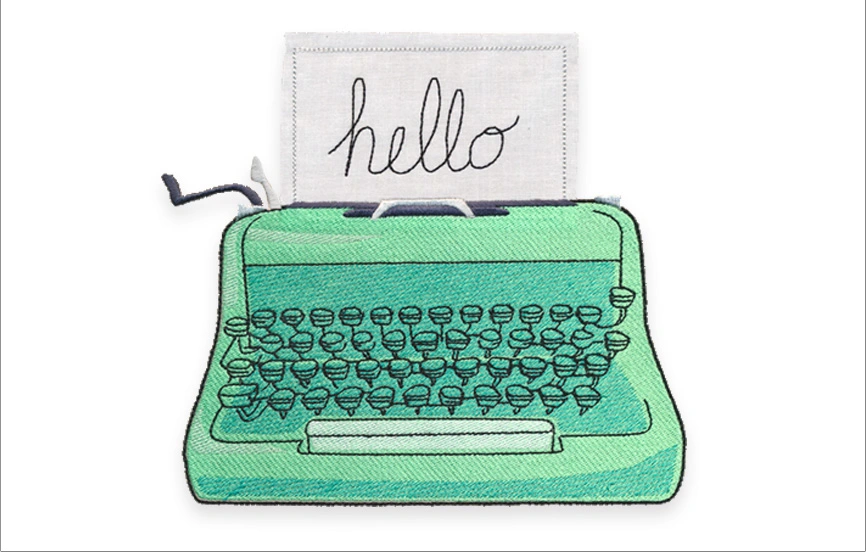Thick thread brings a unique look to your embroidery -- hearty, natural, textured, and a little bit retro. This thread requires specially created thick thread embroidery designs, along with a few special tips and techniques to help them look their best. We'll show you how to work with thick thread!

To stitch these special designs, you'll need:
- Thick thread embroidery design (we're using the Man in the Moon)
- 12 weight embroidery thread
- Medium weight cutaway stabilizer
- 100/16 or 110/18 titanium or universal needle
These designs are digitized for 12 weight thread, such as Madeira Burmilana (a wool/acrylic blend, which we're using here) or BurmilanaCo (a cotton/acrylic blend). These threads are available from a variety of retailers, including Madeira and The Sewphisticated Stitcher.

Since this thread is thick, you will need a large needle - a size 100 or 110 needle works great. These needles have a slightly larger eye which allows the thread to pass through more easily.
Unless you have an auto threader on your machine, it can sometimes be challenging to thread the needle. Here's a tip: first thread the machine with a length of 40 weight embroidery thread, tie it in a knot around the thick thread, and then pull the 40 weight to lead the thick thread through the eye. Also, you can find needle threading tools at most sewing or craft stores. These work great too.

Pair the fabric with stabilizer as you normally would -- I'm hooping my fabric with one piece of medium weight cutaway stabilizer. Attach the hoop to the machine and embroider the design.
Note that you may need to decrease the machine's thread tension to accomodate the thread's increased thickness. It's a good idea to test-stitch a design before embroidering it on your project to make sure the finished design is looking the way you want it.
Also, turning down the machine's stitching speed can help to reduce the friction of the thread moving through the needle and minimize thread breaks.

Thick thread can bring wonderful depth and texture to your embroidery projects. Let these specially created thick thread designs bring a unique look to pillows, bags, jacket backs, and lots more!
After sewing a few designs, you may notice fuzz build up under the throat plate and around the needle. This is normal as some fibers of the thread are rubbed off as the thread runs through the needle. Be sure to clean these areas often when using thick thread to keep everything running smoothly.


